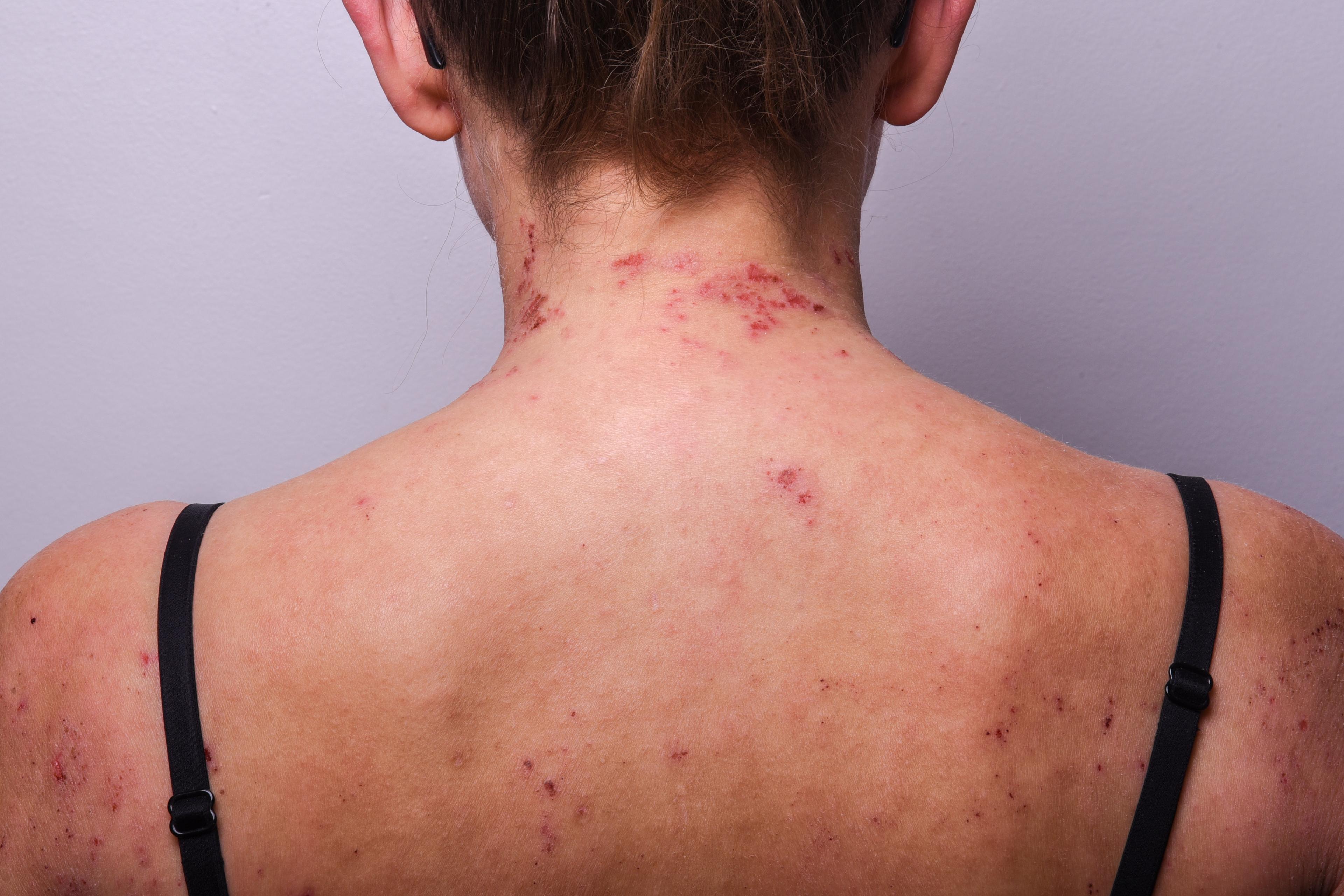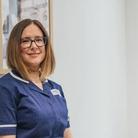When we think about acne, often we just imagine it on the face, but it can appear on other areas of the body too. And one common place is the back. But what causes back acne - or bacne? And what’s the best treatment for acne on the back? We asked Nurse practitioner and owner of Taunton Aesthetics Mary Munro for help. Here’s what she said…
Bacne: Best Treatment For Back Acne
What is bacne?
Bacne is, in its simplest terms, acne on your back! That’s the easy part. But what is acne? Well, acne is, essentially, spots and pimples caused by a bacteria feeding off an accumulation of oils when there is a lack of natural exfoliation of dead skin cells. Acne can happen to anyone, at any age, and is often found on our faces, necks, shoulders, chests and backs. Anywhere we have pores or hair follicles, we can get acne.
One main cause of acne is the buildup of dead skin cells in the pores that are not naturally exfoliated by the body. Most people's skin cycles are capable of shedding away these dead cells, but those with acne tend to keep hold of them. So, exfoliation is a very important part of an acne sufferer's skincare regime.
We all have sebum (oils) in and on our skin, and those with acne tend to have a much stickier form which causes dead skin cells to stay put. The sebum plugs up the pores and holds onto the dead cells, which agitates the skin, causing an inflammatory response. The sebum then becomes the perfect food for P acne (Propionibacterium acnes) bacteria that sits on our skin.
We all have this bacteria on our skin; it's part of our skin's usual makeup. But, like a kid in a sweetshop, if it can feast, it will! P acne bacteria multiplies all over the skin and in the pores, and the body goes into a natural immune response, pulling white blood cells to the bacteria, to try and clear it up, which then causes more inflammation. And we end up with white heads or really ouchie pustules and papules.
Over time, the skin is damaged. This can depend on how deep the acne goes and how long it’s been present within the layers of the skin. Pressure is caused by a build-up of puss under the skin, which causes permanent damage to the skin, resulting in scars.
Best back acne treatment
There’s still a lot that needs to be done in order to change the cycle of change surrounding acne. Many people struggle with acne on their backs, and often hide it under clothing, not wanting to draw attention to it or talk about it. The problem is that this then causes scarring that could, otherwise, have easily been prevented or been less severe if it has been caught in time.
So, what effective acne treatment is out there? Many struggle to manage it at home and then either seek out the help of a GP or an aesthetic practitioner, like me. Doctors and dermatologists can prescribe antibiotics to kill the bacteria and prescribe strong retinoids to increase exfoliation rate but, for many, the side effects can be a little daunting. Retinols, like tretinoin or adapalene, can really dry the skin out and cause very sensitive skin, and long-term antibiotics can lead to resistance. Here’s what I would recommend for people with bacne…
Let's start from the beginning.
Step 1: Exfoliation, exfoliation, exfoliation
It’s vital to exfoliate your skin if you have any form of acne - but not too vigorously. Otherwise, too much exfoliation causes your body to overcompensate and, in turn, release more oil or create more inflammation and sensitivities.
Salicylic acid and lactic acid are great examples of exfoliating ingredients known to improve bacne and acne. Salicylic acid is a BHA (beta hydroxy acid) which penetrates deep into the skin, and lactic is an AHA (alpha hydroxy acid) that works more superficially. Both AHAs and BHAs are found in many chemical peels, which can work wonders on acne-prone skin. In clinic I recommend a choice of chemical peels for acne, and personalised regimes depending on the patient’s severity and of course budget.
My favourite chemical peel for back acne is the radiant 20/10 (20% AHA and 10% BHA ) or a Glow peel, with a couple of treatment add-ons, like Detox Clear and Vitamin A Boost to really exfoliate stubborn skin. This can be done every two weeks or monthly. But treatment shouldn’t end in the clinic. I tell all my patients that what happens in clinic can be likened to a gym class. What you do at home is equivalent to your 10,000 steps a day, or the food you eat. One or the other is fine, but doing both is gold! If you really want to make a difference and control acne once and for all, you HAVE to maintain the results in between clinic sessions.
Exfoliating at home with a retinol product will work on deeper layers and speed up your skin cycle, and using an AHA serum to exfoliate those troublesome upper layers will also do wonders. In fact, AHAs and retinol are the perfect married couple - with a little help from your skincare practitioner. Don’t just go to the shops and buy two random ones though - active ingredients need to be chosen carefully or you’ll get into trouble.
Two more of my faves when it comes to back acne at-home treatment are the Enzymatic peel and Bright and Clear solution! Every patient is different and, depending on skin type and lifestyle, ingredients and products will vary.
Step 2: Reduce P acne bacteria
If you are not using antibiotics, I’d recommend using some natural antibacterial ingredients, such as hinokitiol, resveratrol, and tea tree oil in our regime. This can only truly be done at home, on a daily basis, and sometimes three times daily!
Our acne cleanser and serum are little bottles of magic that not only have these properties but also contain salicylic acid that will exfoliate too. By controlling the bacteria load we’re able to knock out its ability to breed, but it's no good if it can’t get down into the pores. That’s why it's buddied up with the BHA, as it’s oil soluble!
Step 3: Control oil levels
We absolutely need oil in our skin. Skin needs balance and harmony to be healthy, as too much oil or too little can cause inflammation and compensation, reverting back to too much oil. That’s where a good acne cleanser, serum and moisturiser work in beautiful harmony, because they both treat and moisturise. If we have less oil for the bacteria to feed on, we are truly knocking out steps in the breeding cycle. This also stops you looking shiny! Interestingly, though, acne doesn’t always mean excessively oily skin; you can get dry acne too. So, it’s important to have a moisturising element.
Step 4: Consider repairing with microneedling
Acne, particularly on backs can cause a lot of post inflammatory hyperpigmentation (PIH) and scarring. This is most appropriately treated with in-clinic treatments, like skin peels and microneedling, once the inflammation and infective stage is through. Microneedling is an age-old method to boost collagen, elastin and reduce scar tissue. Micro channels caused by the tiny sterile needles create a chain reaction to remodel and heal the skin in a scar-free way, and new, normal skin starts to grow through the scar tissue via the little channels. But Rome wasn’t built in a day! This takes time and, usually, around half a dozen treatment sessions.
At home, this can be further improved with a vitamin C&E serum and an even tone serum that helps to improve the discoloration thanks to brightening and evening ingredients.
Step 5: Keep skin protected
Ok, so you’ve treated your acne, but just because you think your bacteria is now controlled and treated, don’t presume that’s it… Maintenance is key with acne-prone skin, so protecting your skin from further inflammation is key. This means minimising your exposure to UV rays and avoiding sunburn.
To a certain degree the acne bacteria can be killed by some UV rays, but it's very easy to go too far and just start that chain reaction of inflammation again, leading to further pigmentation. Using a broad spectrum SPF of 30+ is perfect, as you’ll get just the right amount of protection. Ideally, an oil-free and chemical-free SPF is best, as you’ll want to avoid clogging pores and adding any more struggles into the mix.
Antioxidants and omega 3 in your skincare and your diet will help no end too. Antioxidants fight free radicals that cause chain reactions and inflammation, so it’s important to fight those and reverse the damage they’ve done. Also, stopping dairy for a month or so can really help, as dairy is well-known for causing acne flare-ups.
Another thing to consider is what you’re wearing. Covering bacne with clothing creates inflammation, so be mindful of the types of materials you’re wearing, and choose something breathable and soft. For example, a nylon undershirt may be better if you wear cotton shirts daily, as cotton is breathable but can be a bit rough!
See the back of bacne
I know that acne can be embarrassing for many people - especially young people. But, hopefully, you now have the tools and advice you need to effectively treat your back acne and boost your confidence. As with many skin issues, you need time and patience, and you’ll need to adopt some good habits. It won’t happen overnight, but you will get there!
For help with acne treatment, find a healthcare practitioner in your area.

